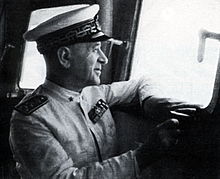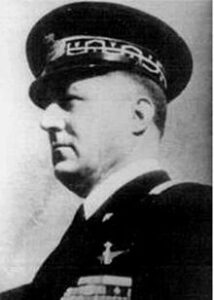When Italy dropped out of the war, many army units deployed abroad faced difficult situations and endured fights and hardship. This was also the case for the forgotten units garrisoning the Dodecanese islands.
Context
The “Dodecanese” is a group of Greek islands situated on the Eastern side of the Aegean Sea, very close to the Turkish coast. In 1912, the islands were occupied by Italian forces, capturing them from the ottomans. The main islands of the archipelago are Rhodes, Kos, Kharpathos, Symi, Leros, Kalymnos and Astypalea, followed by dozens of smaller islands. From the 1920s, Italy started to reinforce the infrastructure of the main islands, by 1940 the Dodecanes had two airfields and a submarine support base. In the period 1940-1943, the Dodecanese bases endured a relative degree of tranquillity, compared to other Italian domains. The Regia Aeronautica flew bombers and recognizance aeroplanes from the airfield of Rhodes, the Regia Marina extensively used the submarine base to support its underwater operations. For instance, the submarine Scirè departed from Leros to undertake the famous Alexandria raid of December 1941. The infantry division “Regina” was stationed there, and parts of them participated in the invasion of Crete in 1941. Right before the announcement of the armistice between Italy and the allies, on the 8th September 1943, the Italian forces in the Dodecanese consisted of 35.000 men of the division “Regina”, 10.000 sailors of the Regia Marina, 1.000 black shirts and 1.000 among carabineers and other corps. All the Italian forces were under the command of Admiral Inigo Campioni, governor of the Dodecanese since 1941 and former commander of the battlefleet.
8th September 1943

Admiral Campioni
Already from the invasion of Sicily, and especially after the fall of Mussolini, the Germans seriously considered the possibility of Italy dropping out of the war and acted accordingly. In 1943 roughly 8.500 Germans of the Infantry Division “Rhodos” were deployed on the islands of Rhodes and Karphathos. In the late afternoon of the 8th of September 1943, the radio broadcast announcing the armistice reached most of the Italian commands overseas, including Admiral Campioni. Late in the night, Campioni received a clear directive from the Supreme Command in Brindisi (Gen. Ambrosio) stating that: “The command of the Aegean is free to take any action according to the local situation, no provocations against the Germans are allowed. However, if the Germans initiate any hostility, the Italian forces must respond energetically”. That same night, Campioni met with General Kleeman (commander of the German forces) and negotiated a preventive truce. The next morning, the Germans already showed the intention of provoking the Italians by trying to occupy key positions in Rhodes.

General Kleeman
The fights in Rhodes
On the morning of the 9th, German troops supported by some panzers tried to occupy the airfield of Maritza. General Briganti of the Regia Aeronautica wanted to oppose the Germans, but he needed the support of the artillery deployed on a nearby hill. However, this request was refused by Campioni who still wanted to respect the truce, although the Germans were openly provoking the Italians. This reckless choice allowed the Germans to occupy the main airfield of the island, without firing a single shot. For the rest of the day, fights erupted between German and Italian units, with the latter ones prevailing in most of the clashes due to the superior numbers. In the night, two British officers were parachuted on the island and asked Admiral Campioni to resist until the 15th when Commonwealth forces would have landed in Rhodes. Also, on the 10th fights continued and the Italians defeated and repulsed the Germans almost everywhere. However, on the 11th Campioni met with General Kleemann and, surprisingly, decided to surrender his forces to the almost defeated Germans. This reckless decision taken by the Admiral has not found an explanation until today, some hypotheses suggest that perhaps Campioni did not believe in the British aid or he considered his position untenable. Notwithstanding the surrender order, some units continued to fight against the Germans in the next days, until they were overrun, and, in some cases, Italian officers were executed on the spot for not having surrendered. On the 18th the situation had stabilized, and the Germans started to round up prisoners and deported most of the officers in Europe.
Fights on Kos
The island of Kos was garrisoned by the 10° infantry regiment of the “Regina” division, commanded by Colonel Felice Leggio. After the arrival of some British envoys, aiming to coordinate the island defense, roughly 1.300 British and Indian soldiers landed on the island to reinforce the defenses. This was sadly in vain. The defenders were hammered by Luftwaffe bombers and on the 3rd October, German units landed in there different parts of the island. On the 4th, the Germans, supported by armored units, had overrun most of the defenders and the island was occupied. After the conquest, the Germans rounded up the Italian officers captured and asked them to switch side or die. Of the 148 officers, seven switched sides joining the Germans, 28 managed to escape to Turkey, 10 were hospitalized and later transferred to camps in Germany, whereas the remaining 103 were executed on the spot, refusing to pledge their allegiance.
The battle of Leros

Admiral Luigi Mascherpa
On the 8th of September, there were no at all Germans in Leros. The garrison of 8.000 troops (mostly Regia Marina personnel) was led by rear Admiral Luigi Mascherpa, who decided to oppose resistance to any German attack. Soon, 2.000 British soldiers landed on the island and reinforced the Italian garrison. For 35 days the British and the Italians were bombed by the Luftwaffe, on the 12th of November Wehrmacht units started to land on Leros, reinforced by Fallschirmjägers parachuting on the island. The situation worsened until the afternoon of the 16th of November, when the British forces surrendered, followed by the Italians a few hours later. Commander Mascherpa was deported together with Admiral Campioni to Germany, the two were then handed over to the Italian Social Republic.
Epilogue
The drama that unfolded in the Dodecanese ultimately cost 20.000-25.000 lives. 2.500 men died in the fights or were executed by the Germans. Roughly 13.500 men died during the transfer to mainland Greece, when the transport ships were hit by allied air attacks. The remaining men most likely died in labour camps in Germany or by diseases.
Regarding the fate of the high-ranking officers, once handed over to the fascist authorities in northern Italy, Admiral Campioni and Rear Admiral Mascherpa were the main protagonists of the so-called “trial of admirals”. The fascist tribunal accused them of high treason for having resisted the Germans in the Dodecanese and sentenced them to death. By executing them (22nd May 1944) Mussolini also wanted to symbolically punish Regia Marina, deemed the main responsible for the defeat of Italy. To search for the responsible, he only needed to look into the mirror.
Sources
Timo, R. (2020). I fatti nel dodecanneso dopo l’8 settembre 1943. Storia Militare, 4-19.